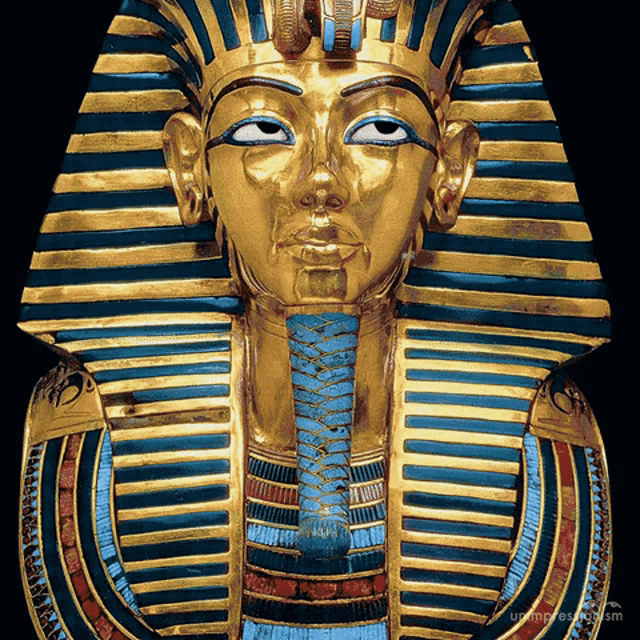The story begins further back than any book or transcript recorded.
Before mastering synthetics, humanity relied on Cannabis for centuries. In 1997 ancient hemp rope was discovered in Czechoslovakia that dated back to 29,600 BC.

Hemp belongs to the Cannabis species; the oldest domesticated crop and one of the fastest growing, most versatile, plants in the world. Hemp and 'Marijuana' are cousins from the same species.
Cannabis was discovered in tombs 8000 years old, and its seeds used in 6000 BC as food.
Chinese Emperor Shennong recorded the world's first medical text in 2600 BC listing medicinal properties of cannabis to fight malaria, rheumatism and as a sedative; laying the foundation for the study of Chinese medicine.
The oldest Chinese agricultural treaty written in the 16th century BC names hemp as one of the main crops grown in the region. By 200 BC Cannabis was grown throughout eastern China.

Cannabis was also found in ancient Egyptian scrolls listed as a medicinal plant to treat sore eyes cataracts. Cannabis pollen was found on the mummy of Ramses II dating back to 1213 BC.
A healthy trade in hemp products reaches across Asia, North Africa, and the Eastern Mediterranean from 800 – 200 BC, and in 100 BC Chinese made paper from hemp and mulberry tree fibers.
Roman surgeon Dioscorides named the plant Cannabis Sativa in 77 AD and described its use to reduce inflammation in his book on medicinal plants, De Materia Medica.
A mummified Ying Pan man from 400 AD was found wearing a painted mask - the first example we have of hemp bio-plastic.
The Chinese used Hemp fiber for their bow strings, and woven into cloth it
was used for clothing and covering the bodies of the dead. Its leaves were used for treating wounded soldiers.

In 500s AD a hemp mortar bridge was constructed in the Roman Empire's Gaul (now France)
Cannabis spread west and in 768 AD King Charles the Great encouraged growing hemp throughout his empire. Which served useful as many people survived on hemp and water during the dark ages. Hemp is high in protein and can be made into a meal similar to porridge.
During the Viking Age of Scandinavian history 793- 1066 AD, hemp was used to arm their ships from the roaring seas and vital for their exploration.

Hemp fiber is two to three times as strong as jute or sisal, making it ideal for cordage, ropes and natural carpeting. Because hemp is unaffected by salt water, it’s excellent for fishing lines, fishnets, sail cloth and other supplies typically exposed to damp weather.
In 900 AD Arabs learned techniques for making paper from hemp and in 1150 AD Muslims used hemp to start Europe’s first paper mill.
Most of the world's paper was made from hemp for the next 750 years
In 1455, Johannes Gutenberg invented the printing press. The Bible was the first great book printed in Western Europe from movable metal type. It was printed on a blend of hemp paper.

When Christopher Columbus, a man who is bafflingly celebrated solely for getting lost, set out on his voyage to cross the Atlantic, 80 tons of Hemp helped bring his ships to America.
Canvas is a derivative of the word cannabis, so, anything made of canvas such as the sails on a ship or artist painting surfaces.. were actually made of hemp.
The Europeans at this point were using hemp oil for lamps and its seed for food.
In 1538 England’s first botanist, William Turner praised Cannabis as a medicine in his book “New Herbal” - It was used in the 18th century on smallpox sores, burns, palpitations and was prescribed for Queen Victoria to relieve her menstrual cramps.

By 1533 King Henry VIII of England forces his people to plant hemp, lest they be fined. Ordering farmers to set aside one "rood" (about one acre per sixty) of their land for hemp, and places heavy fines on those who do not comply.
His heir, The glittering Virgin Queen Elizabeth I, continued to do so because hemp rope is vital for naval fleets going to battle, riling her rival, King Philip of Spain to fill his empire from modern Argentina to Oregon with the plant.
Throughout Colonial America Industrial Hemp played an integral role in the lives and economy of the settlers.
While much of the fiber was destined for British consumption, colonists produced many goods for their own use including paper, cloth, canvas and cordage. The Jamestown Colony in Virginia passed a law in 1619, requiring farmers in the territory to plant hemp - “ordering” all farmers to “make tryal of “(grow) Indian hemp seed. It is the New World's first cannabis legislation.
During shortages in Virginia, in the years 1763 to 1767, you could be fined for not growing hemp on your farm. From 1680 to the 1800s you could actually pay your taxes with hemp!
Cannabis was commonly used as medicine for more than 100 illnesses and diseases in the US between 1850 - 1936
80% of all textiles, fabrics, clothes, linen, drapes, and bed sheets, were made from hemp until the 1820s.
All school books were made from hemp or flax paper until the 1880s. Which is ironic, because Hemp was removed from all textbooks, and is not even mentioned in the National textile museum.
From 1000 B.C. to the nineteenth century, Cannabis was the world's largest agricultural crop.
But then slowly came the decline….
Hemp processing was hard labour. It would take whole families' every effort just to barely make ends meet. To earn a living at it, they had to harvest then manually break the stalk, separate the fibers from the hurd “wood chips” inside. Then process fibers for textiles, and other materials. It was the equivalent of processing cotton, before the cotton Gin.

The 1800s was the heart of the industrial revolution. Cogs and wheels began to whirr, the Cotton Gin was invented and from that point on the amount of raw cotton yielded doubled each decade.
Cotton became cheaper than hemp, paper was made from trees, steamships replaced the waving hemp sails.
Industry was gaining power - yet, hemp still held sway.
In 1914 the Federal Reserve prints the $10 bill with a depiction of hemp farming on the back.

We print our founding fathers and our previous monuments in our money, and in 1914, we printed a depiction of hemp farming.
By the 1920s we saw a shift in power from our farmers to giant corporations and the need for mass production. Gasoline and petroleum industry exports became big business in America; in 1925 the petroleum industry exported at $421 million.
The lumber and logging industry grew and took shape in response to demand for building materials and paper.
In the roaring 20s we see a wave of mergers and consolidations, and specialization across industries.
In the chemical industries DuPont was a leader in fabrics and plastics. By the 1930s DuPont Chemicals held patents on many synthetic products and pioneered the development of paint, synthetic rubber, plastics, photographic film, insecticides and agricultural chemicals.
Newspaper and logging baron William Randolph Hearst becomes a major consumer of the cheap, chemical-drenched tree pulp paper. His empire depended heavily on timber for its paper operation. Pulp replaces hemp paper in the late 1800s, even though it yellows and falls apart after a short time.
Corporations feared hemp as a big threat to their bottom line, so they proposed prohibitive tax laws and occupational excise taxes upon hemp dealers.
In fact, resurging hemp now that technology did exist, would have severely threatened the petrochemical industry, the timber industry, the chemical industry, and other synthetic manufacturers.
What we yield from 4 acres of timber to make paper, we can get from 1 acre of hemp.
Timber takes a whole generation to grow back, whereas hemp takes 6 months.
Cotton uses 25% of all agricultural pesticides , cannabis grows with almost none.
This one plant can produce tens and thousands of products.

Industrial hemp was submerged and instead synthetic tycoons and multinational conglomerates were born, with incentive to advocate against industrial hemp, and its uses.
And so Lamont DuPont, William Heart, a man named Andrew Mellon, US Secretary of Treasurer at the time, one of the richest men on earth, and who happened to be a major investor in DuPont Chemicals. Plus, his niece’s husband, Henry Anslinger - Head of the Federal Bureau of Narcotics with his men out of work since alcohol prohibition ended 5 years earlier, all had vested interest in submerging the plant.
Together, they set out with the collective goal to criminalize and demonize Cannabis, and those who use it.
So, how did they do it?
They planned and executed one of the most brilliant rebranding campaigns in history.
See, they knew no one would vote against Cannabis, that’s our medicine.
No one would vote against hemp, that’s like voting against potatoes, or cotton.
But Marijuana - That wasn’t part of our rhetoric. That’s not a word we used.
Marijuana is actually known to have Mexican origins and traditional association with the name María Juana. It was commonly known during the Mexican Revolutionary era (1910-1920) famously used in a version of the lyrics of La Cucaracha.
Playing on racist fears, Henry Anslinger popularized the word to stigmatize the plant (the entire family) by giving it a foreign sounding name, and linking it to Mexican immigrants and blacks in an effort to associate it with low-status criminals.
So, together, they launched a smear campaign with Reefer Madness, followed by a series of print propaganda published by William Hearst’s newspapers in what became an annual crusade against narcotics - linking marijuana with murder, insanity, and death.


And they won. In 1937 the Marijuana Tax act passed. The licensing and tax regulations made hemp cultivation nearly impossible for American farmers.
It was industrial espionage. It was deliberate and malicious.
The following year, we have the first cannabis criminals in a wave of indictments.
Yet, Cannabis was still Federally legal.
During WWII the Japanese cut-off hemp supplies of manilla hemp from the Philippines. The US Department of Agriculture launched a Hemp for Victory campaign in 1942 to educate farmers on the history, uses, cultivation, and harvesting of hemp and encourage them to grow it.
That same year, Henry Ford built a car made out of a blend of natural fibers including hemp. It didn’t gain popularity because of the petrochemical industry's strength.

Cannabis remained legal until a case in 1969 between Prof Timothy Leary, a clinical psychologist, and the US supreme court.
He was arrested in 1965 under the tax act, sentenced to 30 years in prison, fined 30,000, and ordered to undertake psychiatric treatment.
He appealed, claiming the Act to be unconstitutional it required self incrimination, which is against the Fifth Amendment.
And he won.
Repealing the tax act, and instead, Congress passed the Controlled Substances Act in 1970 criminalizing cannabis (The whole family) - listing it as a schedule 1 narcotic, up there with heroin.
And that’s where most of us alive today know of this wondrous ancient plant. After 44 years the 44th President Barack Obama signed the 2014 farm bill to allow hemp agriculture for research purposes.

The 2018 farm bill passing clarified a distinction between the cannabis species based on the percentage they contained of the psychoactive compound Tetrahydrocannabinol (THC). And removed hemp (containing less than .3% THC) from the controlled substances schedule making it a regular commodity.
For the most part...
We must continue to push for legislation and regulations that enable us to maximize the benefits of hemp while safeguarding our farmers from the restrictive 0.3% threshold. The cultivation and potency of hemp depend on various environmental factors, and farmers engage in this industry for legitimate purposes, not to violate the law. Our focus should be on advocating for the regulation of hemp as an agricultural matter under the USDA, removing it from the jurisdiction of the DEA.
We need to give the power back to our farmers - Our climate, and life on earth, depend on it.
Got a comment? How about some feedback? Email us at info@greentakeover.com

